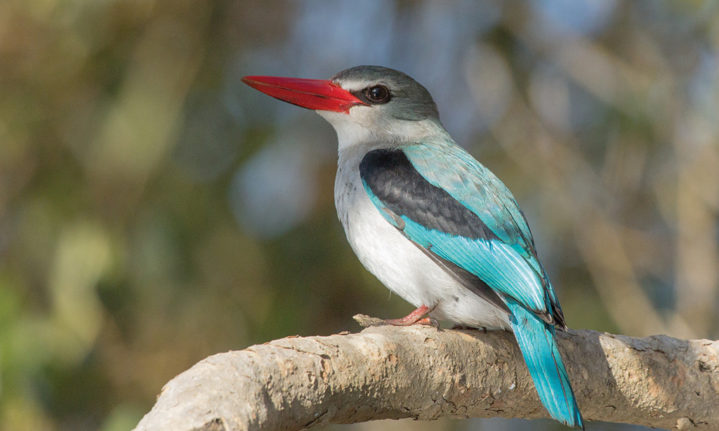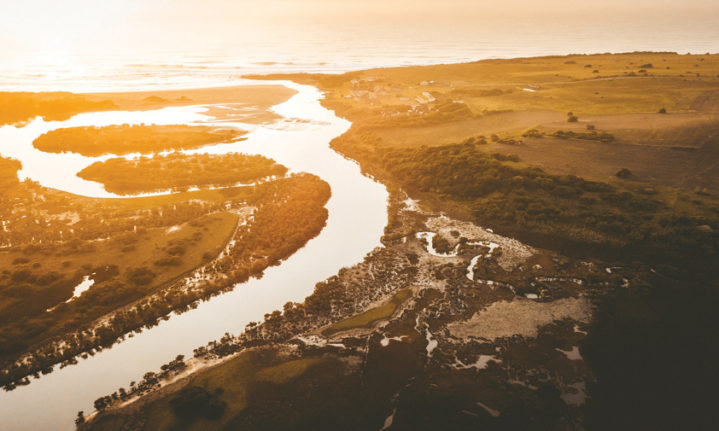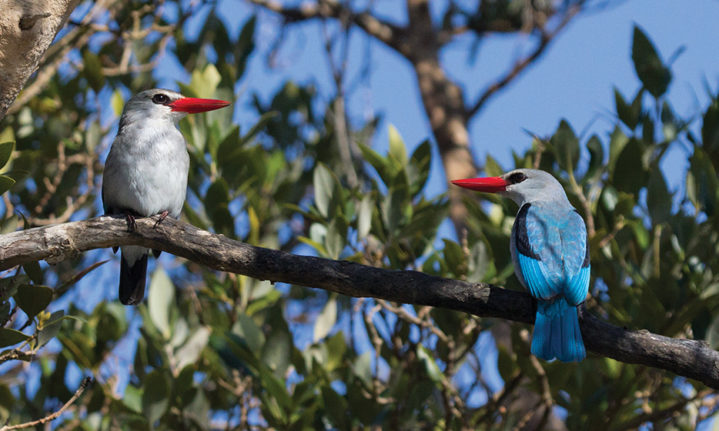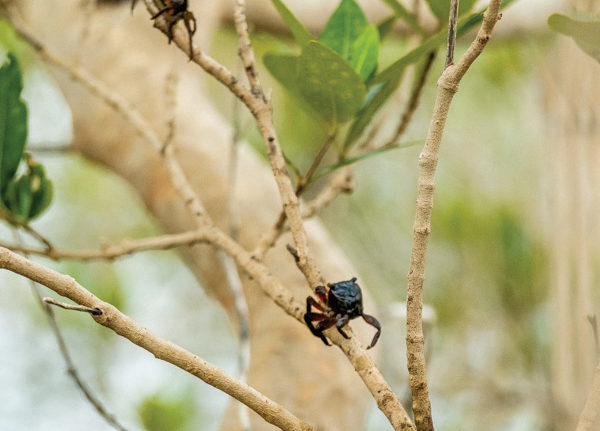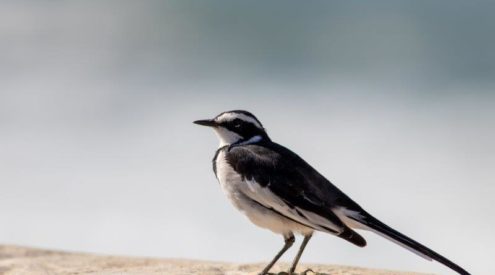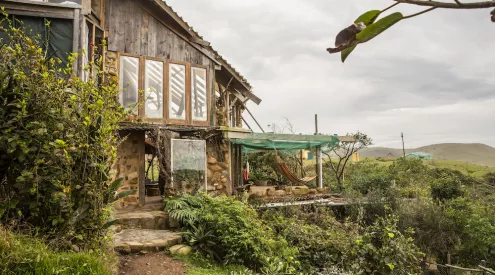Searching the Wild Coast for the elusive mangrove kingfisher inspires ornithological angst and wonder in Jessica Nicholson
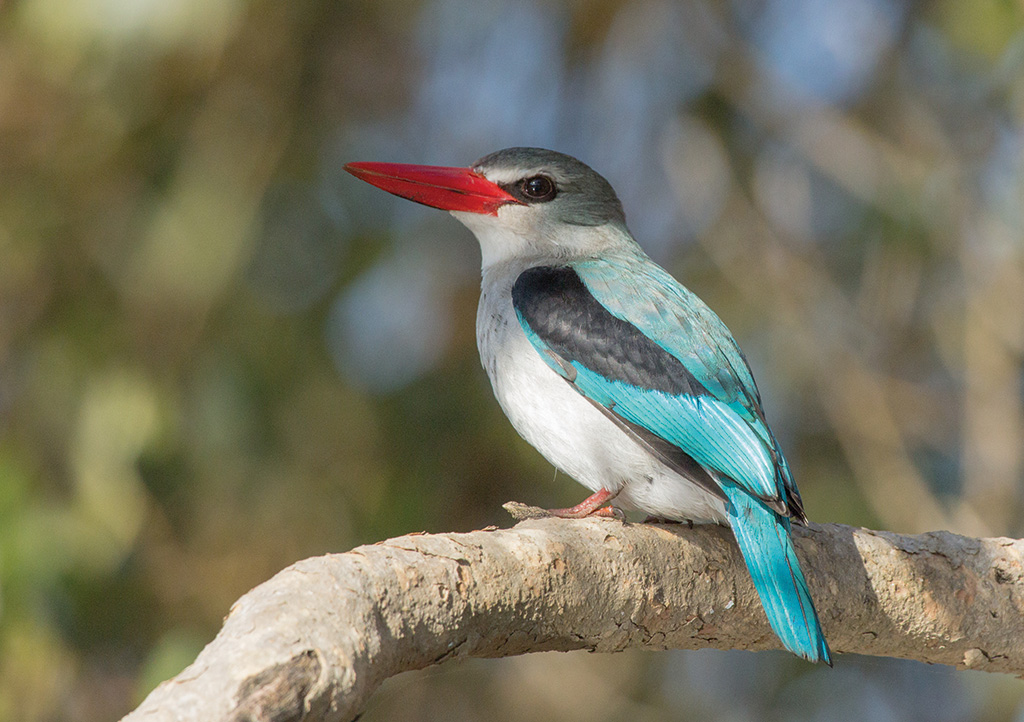
With its heavy red crab-smashing bill, the mangrove king-fisher waits patiently to pounce on crustaceans.
The last time I tried to take an award-winning ornithological photograph, I was 10. A large and incredible bird landed on our roof. My dad whispered, ‘quick, get a camera’. I knew little about birds then. Except that it was not a hadeda, nor a pigeon. From the garden my father snapped away with an ancient Olympus and I rushed to tell my mother we had found a new species and would soon be very famous. She walked outside, looked roofwards, and said, ‘It’s a peahen.’ Disappointment sunk like a clay-pigeon and I was put off birds for about 30 years.
This time, finally healed from the childhood scarring the peahen left, my quest to find and photograph a special bird – the elusive mangrove kingfisher – began with equally high expectation, a better camera, and a more mature knowledge of what I would be looking at (the mangrove can be mistaken for the woodlands, but not easily for a peahen). Thankfully there were other birders with me, and Sean Pike, a birding aficionado and manager of the Wavecrest Hotel on the Wild Coast, who steered us slowly up the Nxaxo River on a boat.
Here, where the Nxaxo and Ngqusi rivers meet the sea, the country’s southern-most naturally occurring large mangrove swamps line the estuary in narrow bands. So at high tide, you can get right up to islands of mangroves and their dwellers, which gives a better chance of mangrove kingfisher spotting.
Sean assured us that he’d seen at least three breeding pairs in spring. The kingfishers spend their halcyon days here (breeding in spring and summer) among the mangrove swamps and coastal dune forests. ‘They spend winter in KwaZulu-Natal and Mozambique, where they are very difficult to see because of the sheer size of the swamps. And they are quiet and elusive in the winter, when they are not breeding,’ said Sean.
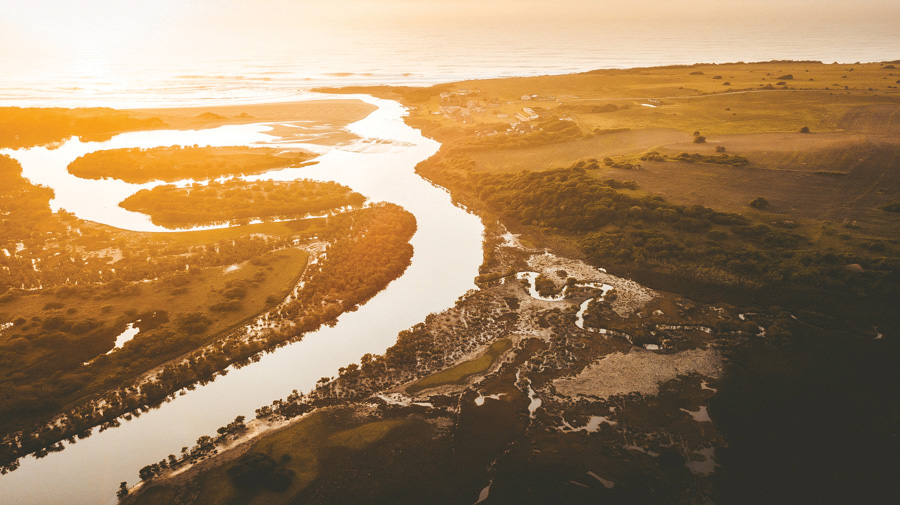
Nxaxo estuary is an ideal home for this remarkable bird.
Like many of the humans hanging out in the estuary, the kingfishers are there for the seafood, and the Nxaxo estuary is bountiful. The mullet are so big, I was told, they will knock you off your kayak if their aim is good. The muddy ground is also alive with movement. Countless crabs scurry about, scampering in and out of their holes, sometimes climbing the trees to dry out. So our kingfisher, who mostly fancies crab for dinner, basically already has it served and plated – unlike humans, for whom catching crabs, or in fact just trying to eat them on a first date, is a painful and difficult business.
For the mangrove kingfisher, it’s an essential part of the mating ritual. The male approaches the female with a crab in his beak, and tries to feed it to her. If she isn’t interested, he simply eats the crab himself – as consolation.
As we quietly cruised (no motor sports are permitted), Sean pointed out the dead branches of the white mangroves, which have nobly sacrificed themselves to die by salt absorption, so the rest of the plant can live; and the black mangroves which have done the same, but this time nominating a leaf to be the martyr. We passed a few red mangroves in a clump, which are rarer here. But our mangrove kingfisher was evasive.
Dr Julie Conradie, also onboard, mentioned that she’s been coming to the Wild Coast for four decades and has seldom seen the bird. I, on the other hand, a confident first-timer, had been spotting flashes of the exact right shade of mangrove kingfisher blue ever since we set off. ‘There,’ I half-shout-whispered. Sean stopped the boat. And sure enough between the leaves and branches and mud and water, was an intermittent swatch of blue. There were mutters as binoculars moved from necks to eyes. I proudly poised my camera, ready and waiting.
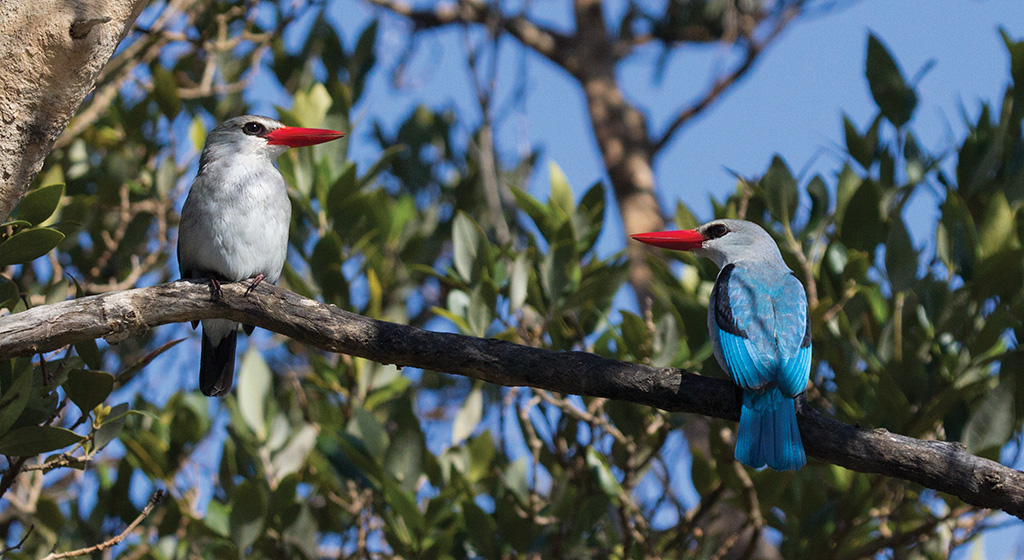
Not only are mangrove kingfishers strictly monogamous, they divide up parental duties equally and alternate feeding their hatchlings.
‘It’s not, in fact, a kingfisher,’ said Sean, ‘It’s a scientist.’ And out of the marshy water, emerged not one, but two, extremely muddy and wet scientists, bits of blue on their brown jackets.
Not exactly what we were looking for, but very use ful nonetheless. And by the time we disembarked, I am happy to report that Wilmari Theron and Anusha Rajkaran, scientists from the Department of Biodiversity and Conservation Biology (UWC) said I was ‘woke’ because I had started to understand the whole system better, and fall in love with mangroves.
Rajkaran has spent the last 20 years observing the state of South Africa’s mangroves. ‘These mangroves are life-giving. They are the force that supports the entire estuary – the whole system, including your fishing hobby, your fascination with pretty birds, and your photography hobby,’ she explained. ‘The aerial roots are covered in life, and form nurseries and shelter for small fish which the kingfisher eats; the bark supports life, the branches and leaves support life. Currently humans are pumping carbon dioxide into the atmosphere, causing climate change. Plants help by removing it through photosynthesis. But what is so special about estuarine habitats, is the mangroves, salt marsh and sea grass take up the carbon and store it in the sediment long term, effectively creating a carbon sink. They are constantly working on saving the planet.’
Sean’s binoculars suddenly stop, our heads turn in unison, ‘At about 11 o’clock, just on the bank…’ A bit of yellow this time. It’s a water leguaan, soaking up the last of the sun on a rock. Enormous, and unperturbed as we get close. We see another a bit further on. A giant kingfisher flies past, and then a pied. We see a malachite, an African pygmy and a brown-hooded. And then sadly we have to turn around, mangrove kingfisher-less. But I am happy with my sightings: two leguaans, two scientists, four out of the seven possible kingfishers, a new respect for mangroves. And one more trip planned for sunrise the next day.
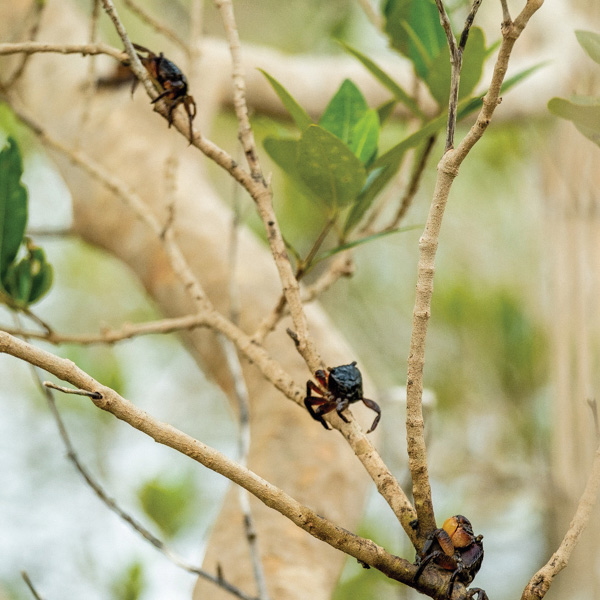
Mangrove crabs can both burrow in the ground and climb trees – a dexterity which makes them easy prey for mangrove kingfishers.
And in the morning, after about 10 minutes of quiet kayaking on glassy water, there, on a branch, was the right shade of blue: a mangrove kingfisher. She sat for a bit and then darted in and out of the water. Once she was bathed, and all fluffed up, clean, fresh and beautiful, she lingered just long enough so we could take a picture.
Feathery facts
It is estimated that there are only between 200 and 400 mangrove kingfishers in South Africa.
Since ancient times, the kingfisher has been linked to weather forecasting. Halcyon means kingfisher in Greek and the phrase ‘halcyon days’ refers to settled days – synonymous with summer. The phrase is said to have been first coined by Aristotle, who claimed the kingfisher made its nest on the surface of the sea.
The blue of the mangrove kingfisher’s back is produced by a trick of the light, known as the Tyndall effect, rather than actual colour produced by pigment.
Mangrove plants are so useful as carbon sinks, airplane travellers can atone for their carbon footprint sins by buying carbon credits or donating to projects which conserve and plant mangroves. Mikoko Pamoja in Kenya (mangrovealliance.org) is the world’s first blue carbon project.
Kingfishers fly at one pace: fast, although they can hover when fishing. The beak is aerodynamic so the bird can dive towards its prey with maximum speed and minimum splash. The shape is so ingenious, Japanese bullet trains are modelled to mimic it.
Sources: The Guardian; Living With Birds; earthsky.org









